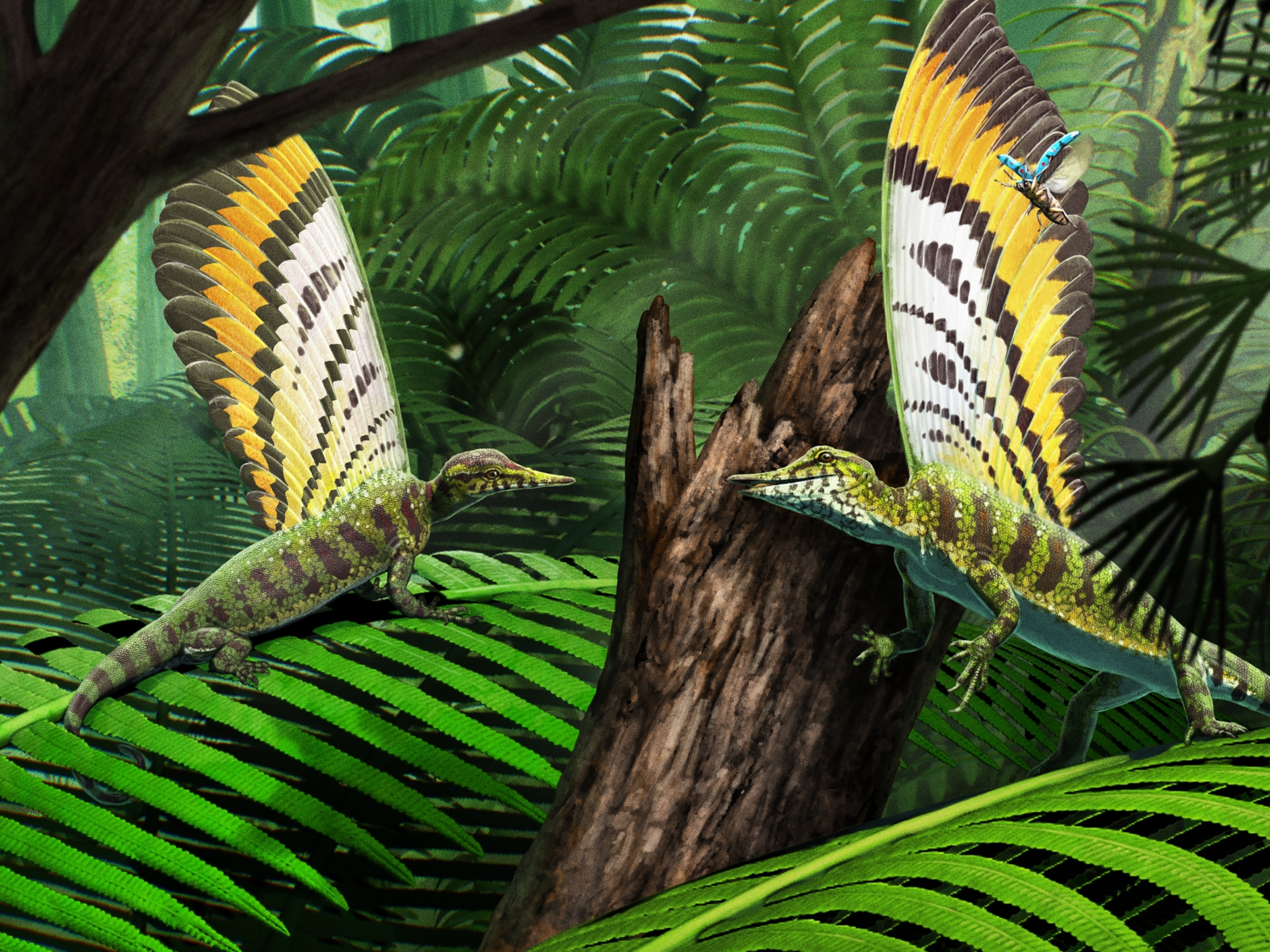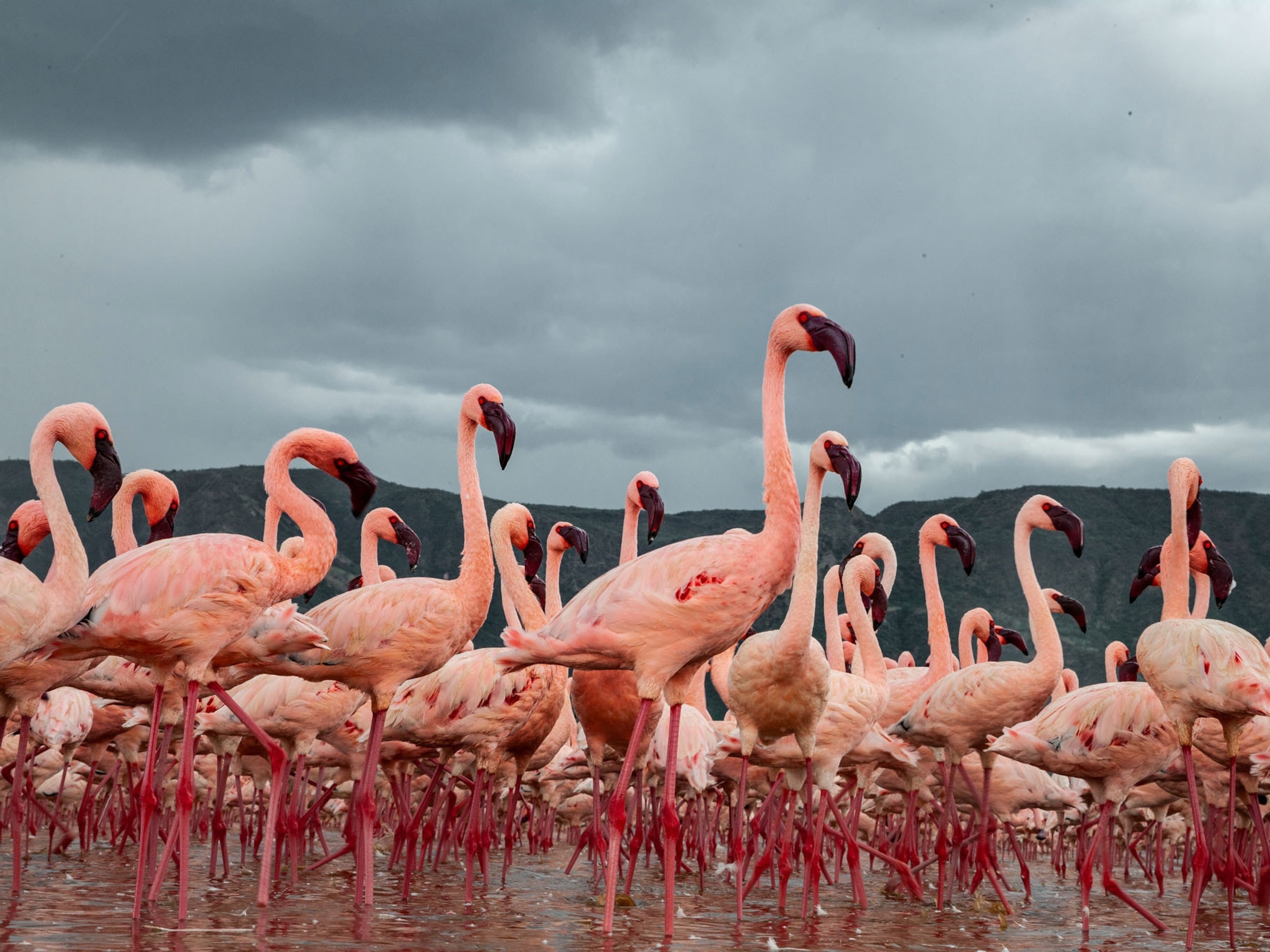
Q&A: Giant-Bird Research Illuminates “Chicken From Hell” Dinosaur
A bird-and-dinosaur expert weighs in on the similarities.
Todd Green is an authority on both emus and dinosaurs—an unusual combination.
A zoologist who prepares skeletons and draws dinosaurs for the skeleton display company Osteosaur, Green has also spent hundreds of hours wrangling emus on a Colorado ranch to learn how birdlike dinosaurs might have behaved.
Last week, scientists announced the discovery of one of the biggest feathered creatures ever found in North America: A 500-pound (225-kilogram), 11-foot-long (3-meter-long) bird-like dinosaur nicknamed the "chicken from hell."
Anzu wyliei, which was closely related to birds, likely resembled a pumped-up version of a modern flightless bird such as an emu, ostrich, or cassowary, according to a study published in the journal PLOS ONE.
The 66-million-year-old dinosaur lived in what's now North and South Dakota during the Cretaceous period. (See pictures of flightless birds.)
National Geographic talked to Green, who wasn't involved in the new research, to learn more about how A. wyliei would have looked and acted.
You wrestled emus as part of your dinosaur research?
Many times. The trick is to get behind them. Emus can be 6 feet (1.8 meters) tall and weigh 120 pounds (54 kilograms). They kick forward very powerfully, but they can't kick backward, usually. So you have to give them a big bear hug from behind and grab where their sternum is.
Why did you have to do that?
Because we had to move the emus from one pen to another or into a trailer. When I first started working at the ranch as an undergraduate at Colorado State, there were times when four of us would surround a bird, and it still swung around and kicked us all off. They can really pack a wallop. I've seen emus kick in the wrought iron doors of a trailer.
What was the dinosaur connection?
I was taking a course at the time with Brent Breithaupt, a paleontologist who was analyzing dinosaur footprints east of Cody, Wyoming. There are thousands of tracks there from three-toed dinosaurs known as theropods. The tracks are all different sizes, and Brent was trying to figure out if they were left by a family, with adults and juveniles, or by members of different species. My assignment was to visit the emu ranch every week to measure the growth rate of emu feet to help him sort it out.
Why emus?
Emu feet are very similar to dinosaur feet. When you watch an emu move, you can't not think of a dinosaur—the flow of how they walk. When they pick up their feet, their toes curl back. Then right before they plant that foot, the toes spread back out again. That's because of something that birds and dinosaurs share anatomically, based on the way the tendons in their legs are set up.
In fact, when they made movies like Jurassic Park, they used emus as analogs for tyrannosaurs and other theropods [or two-legged meat-eaters like Tyrannosaurus rex]. (Quiz: Test your dinosaur IQ.)
Emus are fast, aren't they?
Extremely. They can sprint up to 35 miles (56 kilometers) an hour. But they're even more impressive as endurance athletes. Emus can run at 20 miles (32 kilometers) an hour for as long as 40 minutes.
What else do emus have in common with dinosaurs?
The big oviraptor they just announced had a bony crest on its head that probably resembled that of a cassowary, another modern flightless bird. Many oviraptors had elaborate crests like that. We don't know what they were for, but with cassowaries it might have something to do with amplification of sound. Cassowaries are known to make an infrasonic sound that they boom out in the rain forest to say, Hey, I'm here. Anybody else around?
Any similarities with their eggs?
They're very similar. Emu eggs have the same bumpy surface that theropod eggs do.
How big do emu eggs get?
Imagine an oversize avocado—about ten chicken eggs' worth. Maybe six inches long.
And dinosaur eggs?
Smaller than you might think. The oviraptor eggs that researchers found in Mongolia are very similar in size to emu eggs. They're a little bit more elongated but also six to eight inches long.
Didn't you find some dinosaur eggs in Utah?
Well, last year I was invited to join a team that had found a mound of dinosaur eggshells in the Kaiparowits formation in southern Utah. There was some debate about what they were. Some might be from turtle eggs. Some might be from hadrosaur eggs. Some are probably from theropod eggs. They looked just like emu eggshells.
The "chicken from hell" sounds pretty fierce. I guess you wouldn't want to meet a theropod in a dark alley.
I'd really love to see one, but I wouldn't stand much of a chance. It would be a very happy last couple of seconds.
Follow Peter Miller on Twitter @pmillerZZZ





